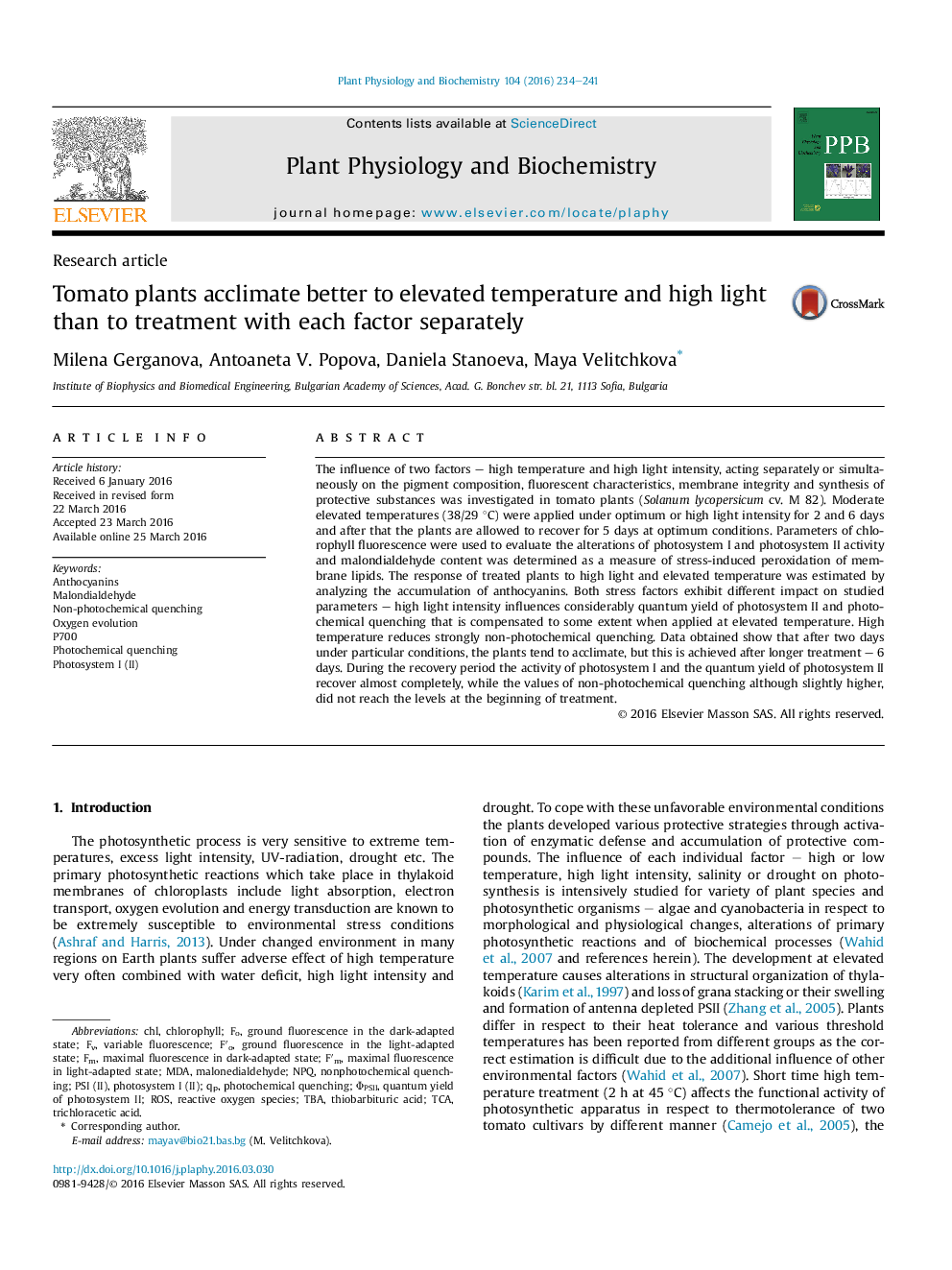| Article ID | Journal | Published Year | Pages | File Type |
|---|---|---|---|---|
| 2014768 | Plant Physiology and Biochemistry | 2016 | 8 Pages |
•Tomato plants acclimate better to the combined action of high light and temperature than to a single treatment.•Membrane integrity of tomato plants is less injured when high light action is combined with elevated temperature.•Less anthocyanins accumulate at combined treatment with high light and temperature than at application of one factor only.
The influence of two factors – high temperature and high light intensity, acting separately or simultaneously on the pigment composition, fluorescent characteristics, membrane integrity and synthesis of protective substances was investigated in tomato plants (Solanum lycopersicum cv. M 82). Moderate elevated temperatures (38/29 °C) were applied under optimum or high light intensity for 2 and 6 days and after that the plants are allowed to recover for 5 days at optimum conditions. Parameters of chlorophyll fluorescence were used to evaluate the alterations of photosystem I and photosystem II activity and malondialdehyde content was determined as a measure of stress-induced peroxidation of membrane lipids. The response of treated plants to high light and elevated temperature was estimated by analyzing the accumulation of anthocyanins. Both stress factors exhibit different impact on studied parameters – high light intensity influences considerably quantum yield of photosystem II and photochemical quenching that is compensated to some extent when applied at elevated temperature. High temperature reduces strongly non-photochemical quenching. Data obtained show that after two days under particular conditions, the plants tend to acclimate, but this is achieved after longer treatment – 6 days. During the recovery period the activity of photosystem I and the quantum yield of photosystem II recover almost completely, while the values of non-photochemical quenching although slightly higher, did not reach the levels at the beginning of treatment.
